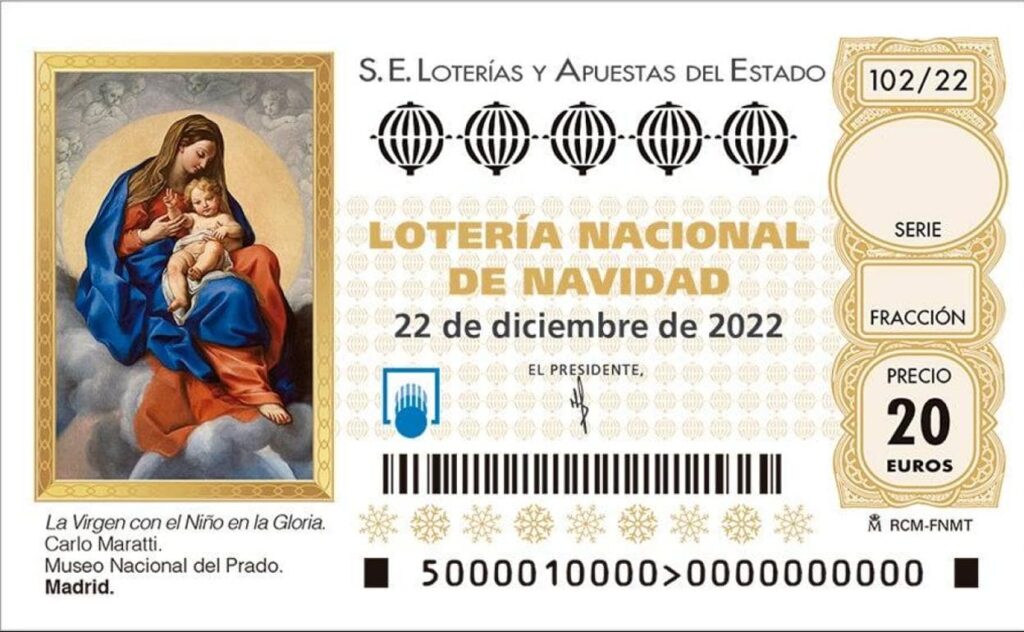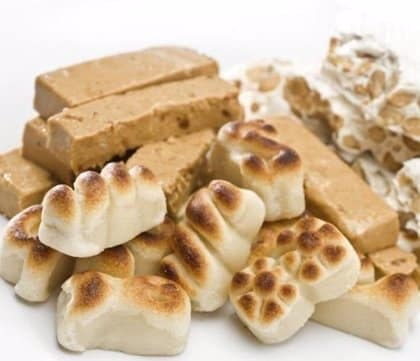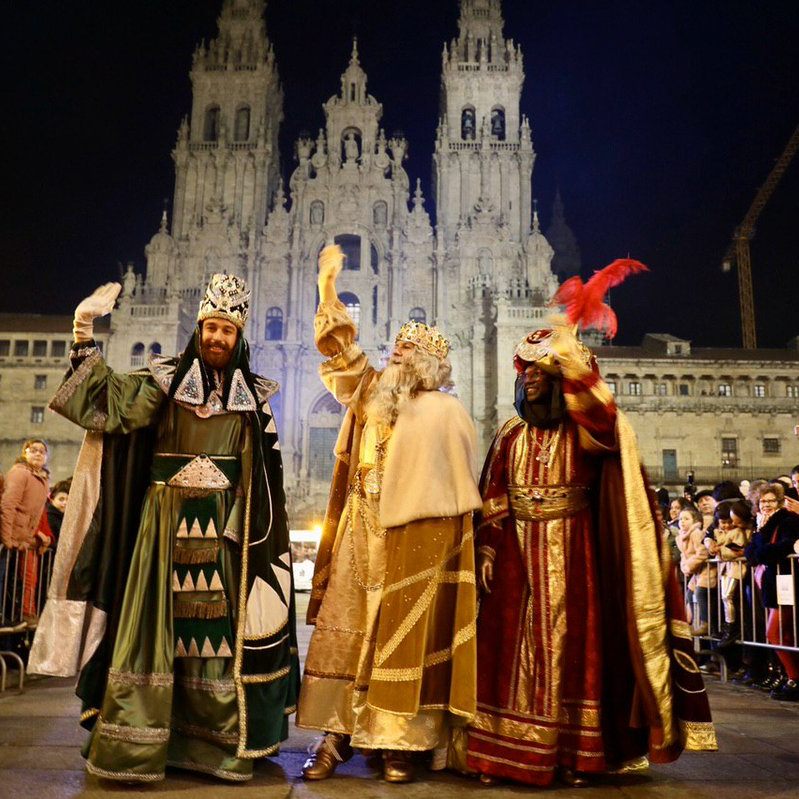There are many Christmas traditions that are celebrated in Spain that are shared with other countries, such as singing Christmas carols, visiting Christmas markets, putting up a Christmas tree and decorating our homes with lights.
However, there are several days and traditions that are uniquely ours, and that are even celebrated differently depending on the city or region of Spain. From December through early January, Spain comes alive with a vibrant calendar of events that reflect the country’s rich cultural heritage.
Let’s explore the key dates and traditions that make our Spanish Christmas so unique!
The Tradition of the Belén – Nativity Scene
Before the holiday season, every home in Spain sets up a Nativity scene, known as a Belén. These displays usually go beyond the Holy Family to include entire villages, complete with shepherds, animals, and Biblical landscapes. In many towns and cities in Spain, nativity scene contests are held. In case you are wondering, yes, at our office in Bilbao we have a Belén!
If you want to learn more about the Belén, take a look at our blog post The Nativity Scene: A Spanish Christmas Tradition.

December 22: Lotería de Navidad – The Christmas Lottery
According to tradition, Christmas in Spain begins on December 24th, however, we all know that it unofficially kicks off with the Lotería de Navidad (Christmas Lottery), which has taken place every December 22 since 1812. This national event, televised live, is part of the holiday DNA in Spain. Children from the San Ildefonso School literally sing out the winning numbers in a joyful and melodic broadcast that the whole country watches with anticipation.
The San Idelfonso School is a public school in Madrid that dates back 400 years. Until the mid-twentieth century, it only schooled orphans.
The prize of this Christmas lottery is known as el Gordo. If you are one of the lucky ones to win this lottery, you are guaranteed to be on TV as you celebrate with tour friends and family. Be prepared for the big question, “What are you going to do with the prize money?”. Although it does not count as a Christmas custom, it is quite typical for the answer to this question to be tapar agujeros, which translates as: pay debts or address urgent necessities.

👉 Learn more about how the Christmas Lottery works.
December 24: Nochebuena – Christmas Eve
December 24th is Nochebuena, or Christmas Eve, one of the most cherished nights. Families gather for dinner that often includes typical Christmas food and treats like:
- Roast lamb (cordero asado).
- Seafood, such as shrimp, clams, and crab.
- Suckling pig (cochinillo asado).
- Baked fish, typically sea bream or sea bass
- Fish soup
Regional Gift Traditions on Christamas Eve and Christmas Day
Traditionally, on Christmas Day, Spaniards do not celebrate Santa Claus or exchange gifts. although it is becoming more common, and some children have started receiving gifts on Christmas Eve. And, in some regions of Spain, we have our own traditional characters who bring gifts to children and adults.
- In the Basque Country we have Olentzero. He is depicted as a jolly, rotund coal miner who delivers gifts to children on Christmas Eve. According to legend, Olentzero made wooden figures in the shape of animals and after putting them in a sack, he would come down from the mountain to give them to the children.
Tradition also says that if the children misbehaved, Olentzero would bring them coal. That is why it is not uncommon to find sweet edible charcoal in stores during the Christmas season.
- In Catalonia, children have the Tió de Nadal, a log that “poops” gifts when hit with a stick. Yes, you read that right.

While Papa Noel (Santa Claus) is gaining popularity in Spain, these regional characters keep local traditions alive.
December 25: Navidad – Christmas Day
On December 25th, families continue the festivities with a relaxed Christmas Day lunch. It’s a day for enjoying leftovers and enjoying classic Spanish Christmas treats:
- Turrón: Almond nougat in both hard (Alicante) and soft (Jijona) varieties.
- Mazapán: Sweet almond paste molded into fun shapes.
- Polvorones: Crumbly almond cookies dusted with powdered sugar.

December 28: Día de los Santos Inocentes – Day of the Holy Innocents
On December 28th, Spain celebrates Día de los Santos Inocentes. This holiday, similar to April Fools’ Day, encourages pranks and jokes, known as inocentadas.
Santos Inocentes translates as Innocent Saints, and according to the Bible and Catholic tradition, on this day King Herod murdered the newborn infants in the region where Jesus was born. The reason we celebrate this festivity with pranks may be because the word inocente in Spanish can also mean naïve. Hence, the prank becomes an inocentada.
Regional Celebrations:
Some towns in Spain celebrate Día de los Santos Inocentes with festivals and events:
- In Ibi (Alicante), the “Els Enfarinats” festival involves a mock battle with flour and eggs.
- In Jalance (Valencia), people participate in a fun, festive street parade with costumes and jokes.
December 31: Nochevieja – New Year’s Eve
New Year’s Eve, or Nochevieja, is celebrated with excitement across Spain. If there is one tradition that brings us all together during the holiday season, it’s New Year’s Eve Countdown or Campanadas.
First, we have dinner with our families, timing it so that everyone is awake and together to welcome the New Year. When the last 12-second countdown starts, we eat 12 grapes — one for each chime of the clock. It is believed to bring good luck for the year ahead.
It is also typical to wear something red to increase your luck.

New Year’s Eve at the Puerta del Sol in Madrid
The most famous countdown happens at the Puerta del Sol in Madrid. Thousands gather in the square, and millions watch on TV. Families often argue over which TV channel to watch for the campanadas, adding a playful touch to the evening.
After midnight, fireworks light up the skies, and celebrations continue well into the early hours. Thankfully, there’s usually a café open in the morning to get your churros with chocolate for breakfast.
January 6: Día de Reyes – Three Kings’ Day
January 6th marks the Día de Reyes, or Three Kings’ Day, when Spaniards exchange Christmas gifts and children receive their presents. The night before, on January 5th, spectacular parades called cabalgatas take place in cities and towns. The Reyes Magos (the Three Kings/Wise Men) — Melchior, Gaspar, and Balthazar — are received by the locals as they bring the chirldren’s presents.
Our Reyes is the Spanish equivalent to Santa Claus, except that three Kings from the east mounted on camels bring presents to the children. And instead of stockings, we leave our shoes out and grass for the camels. In line with our Catholic heritage, Spaniards celebrate Reyes on January 6th, which is the Feast of the Epihphany, when Baby Jesus also received gifts from the Three Kings.

Unfortunately, this day marks the end of Christmas.
Ready to explore more about Spain’s rich culture and traditions? Check out our Camino de Santiago tours for an unforgettable experience year-round!






